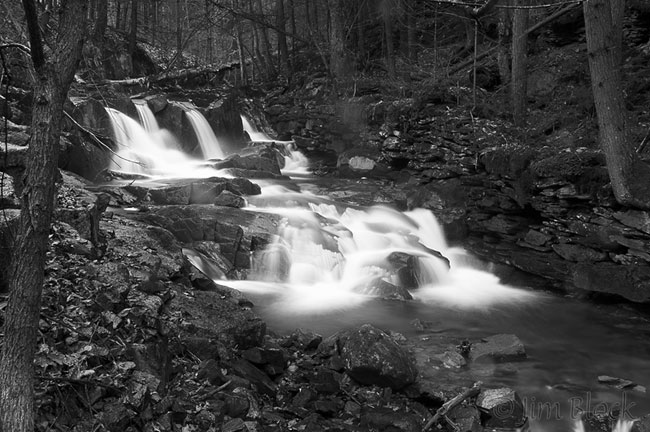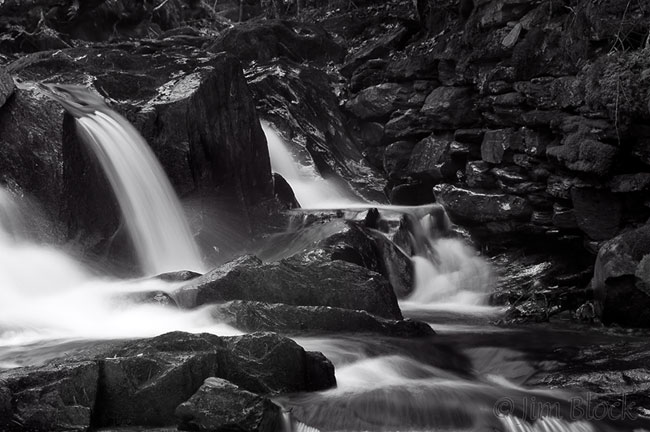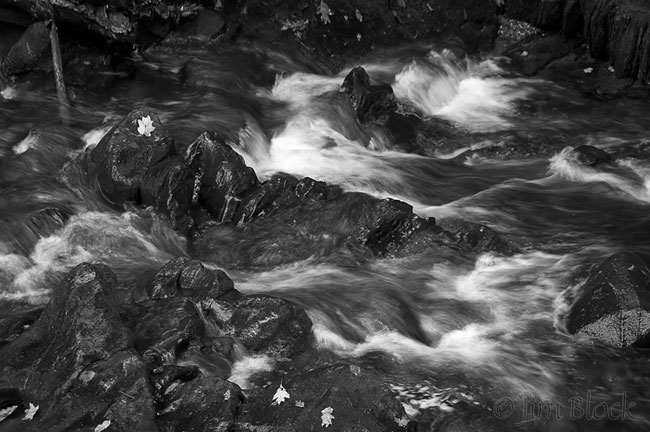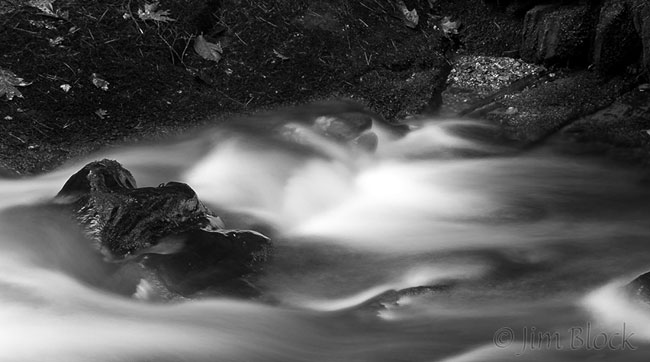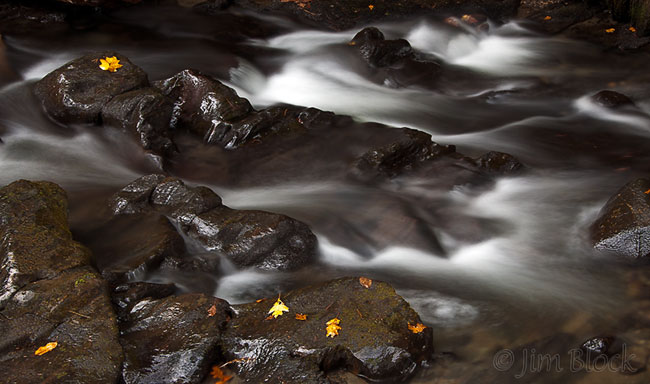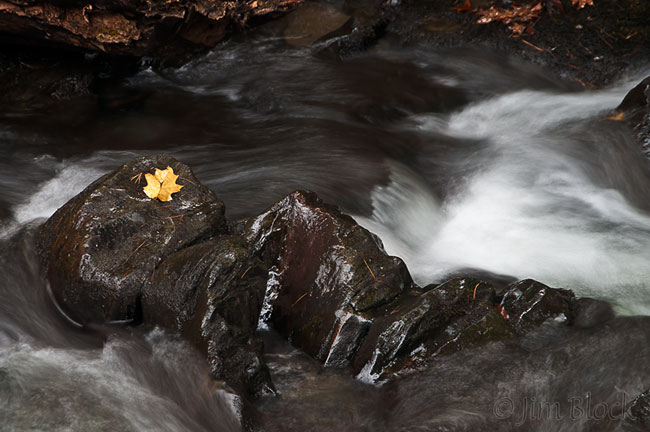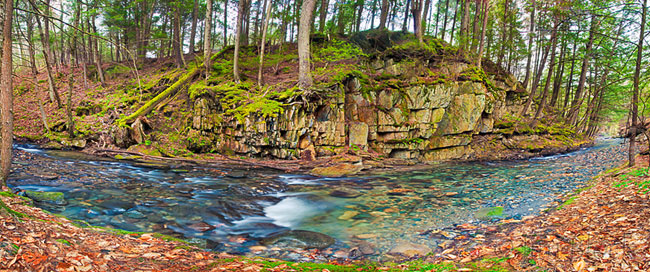Many avoid taking their cameras out when it is raining. I relish a light drizzle for photographing flowers, fall foliage, forests, moody scenes, moving water, and even people. The low soft light can be wonderful, wrapping the subject in even illumination. And since I feel moving water is best photographed with a tripod and long exposure times, low light levels help get to longer exposures.
It was raining lightly yesterday morning when I headed to a favorite spot near my house that I have not visited in several years, Mink Brook. I wish I had left earlier because I only got in 20 minutes of photography before the rain became too intense to photograph. Light drizzle is great—heavy downpour is very challenging.
Even though the light level was low I added a polarizer to my lens for two reasons. First, rotating the polarizer does a wonderful job at controlling reflections. As you slowly rotate it you can adjust the amount of “shine” from the water and rocks. I normally reduce the reflections to their minimum and then back off just a bit. Second, a polarizer reduces the light intensity by about two stops. This allows the shutter speed to be lengthen by a factor of 4. I wanted to take images with exposure times of around 5-6 seconds to really blur the moving water.
When I looked at the scene of the brook everything but the water looked quite dark. The camera naturally produced a lighter image but it was easy to process the RAW images to achieve the moody darkness I saw. Although I do not do Black-and-White often enough, I decided to do a conversion to Black-and-White on some of the images. Having a color digital file is a wonderful starting place for B&W since you can use the color information to control the tones in the B&W image—something Ansel Adams and others had to do painstakingly with filters, guessing at the results.
Here is a brief slide show with four B&W and two color images from Mink Brook yesterday morning. It is a followed by a panoramic image you can click on to get to a version that you can explore in detail.
The image below is composed of 23 separate overlapping photos combined in Photoshop CS5 resulting in a 160 megapixel image. Because such a wide view distorts the scene, the wall looks much smaller than it actually it. Please click the image below to explore the scene in considerable detail.

